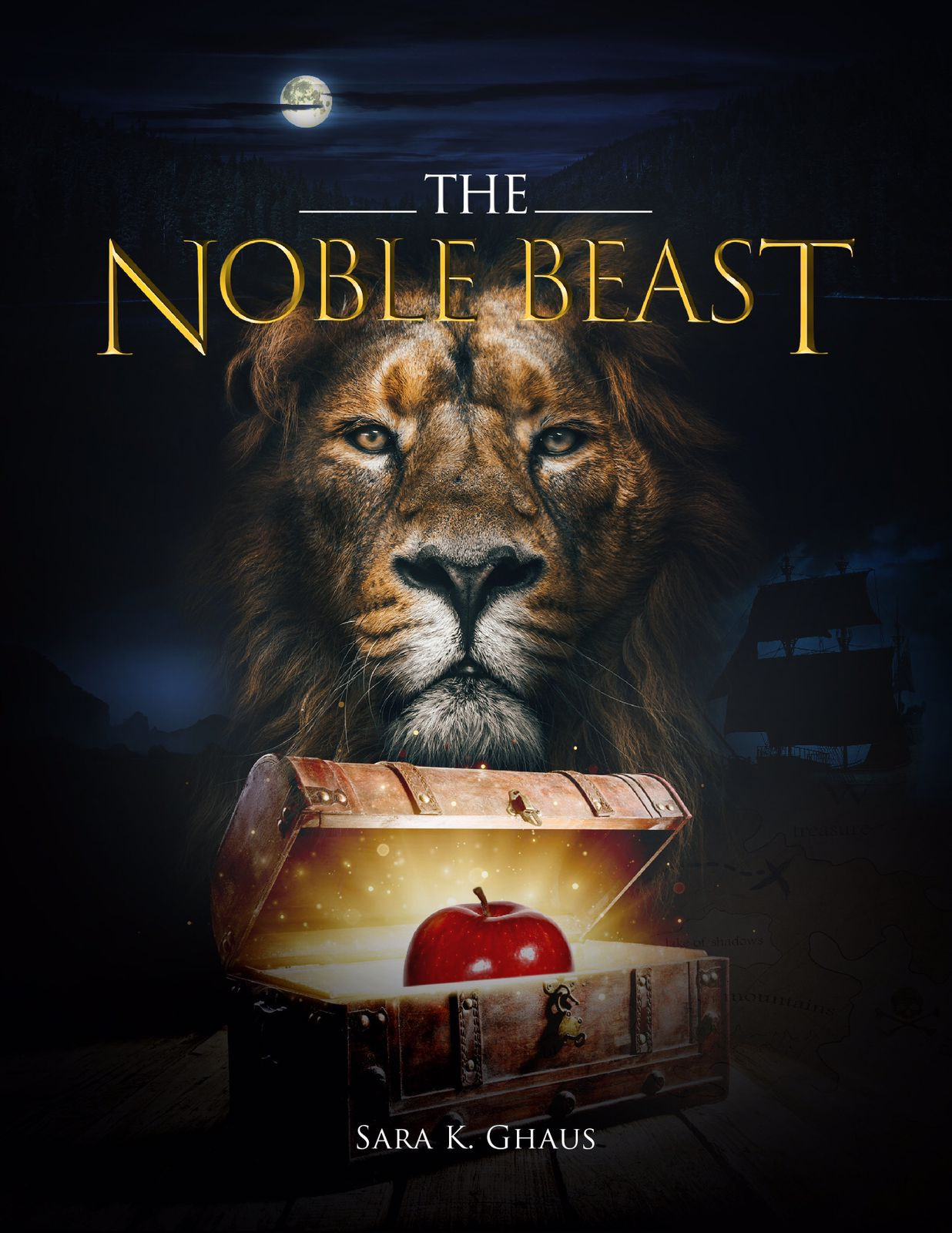
Heartlessly calling print medium ‘a dead medium,’ young people today have started to part ways from books and literature, reading mostly on digital platforms that don’t always inspire or provide knowledge in the way that books do. In Pakistan, reading has a rich history, but for several decades there hasn’t been a book that can hold the attention of 13 to 19-year-olds, an audience that loves mythological tales, intense drama, fairytale love stories, and the battle of good against evil.
As teenagers, we read Harry Potter, Jungle Book, Peter Pan, Sindbad and many others. But, today young adults cannot name any story they really enjoyed reading snuggled up in bed. But, a few weeks ago, I came across a book and I thought that things might just improve.
My colleague recommended a young adult fiction book called The Noble Beast by Sara K. Ghaus, a relatively new author. Its cover took me back to my school days, as at the first glance, it reminded me of The Chronicles of Narnia. On the book cover sat a majestic and intimidating lion against a dark background, head rested on a treasure chest with an apple in it. Intriguing.

The author, Sara K. Ghaus is a young and beautiful Pakistani-Canadian housewife, who began her passionate journey for this novel in 2012, and some 463 pages materialised in 10 years. A little bit reluctant to read the book at first, the young author became my inspiration to finally pick up the book and read it.
The story is about a girl Aeras who lives in Canada, but has roots in the northern areas of Pakistan. The carefree, loving and friendly Aeras, enters a world of magical chaos, when she meets Ayzel. The two fall into a series of incidents that are intriguing, interesting, questionable, nostalgic, and at times a little childish, but perfect for entertaining a certain age group. Several aspects of the book are praiseworthy and retained my attention, despite the fact that I read it during the exciting week of FIFA World Cup knockouts.
Character development is a primary factor that makes a story stand out. To build a strong narrative, there has to be a multi-layered protagonist as a central character that does not have to be all good, but must have a mixture of emotions, positive attributes, and also some negative aspects. If you really think about it, nearly all successful or popular characters are created with lots of grey in them, not stark black or white.
In The Noble Beast, the story begins with the character of Aeras, and the events take place around her. As the story takes off, we get to witness Aeras as a lively girl who lives in a comfortable household with loving parents, and has everything a person could ask for from life. She has an attractive personality, a bright smile adorns her face most of the time, and her friends are loyal and caring. Her energetic conversation skills lift the mood of the scene, and she is hardly ever dull or serious. At this point, the reader is submerged in her relaxed lifestyle and doesn’t expect to see any hardships coming her way.
One night brings the change in her character, when an interaction takes place with her “want”. She gets out of her comfort zone. The author shows changes in Aeras’ behaviour, mood, thoughts and belief system to register the constantly occurring changes in the plot. This step goes with the basic rule of storytelling where characters drive the story and events don’t just transpire out of thin air. Without disclosing details, it would not be wrong to say that the way in which Aeras’ character unfolds is the most interesting aspect of the book.
Ghaus makes sure the protagonist does not narrate her emotions. Once the character development moves in the right direction, the supporting roles and other events start to clearly fall into the narrative archetype.

The Noble Beast has a very simple, yet effective narrative archetype known as the ‘hero’s journey.’ Any content based on this type of storytelling follows a certain pattern. In the case of Ghaus’ novel one will find that the following criteria were completed effectively to showcase the transformation of Aeras.
The first few chapters depict a happy family who cares and a circle of friends who stand by each other. A relationship blossoms that fluctuates between infatuation and intense love. From this point the author takes an enormous time to establish the relationship between the two central characters, Aeras and Ayzel. As you complete 20 per cent of the book, the soft call to an adventure becomes a howl.
After going through less than half of the novel, Aeras confronts an adventure which shifts the mood of the overall story. This is when the plot gets its mystic and magical feel.
Living beings on the planet never want to get out of their comfort zone, but imagine having to do that for something physically and mentally suffocating. Aeras falls into a similar situation, which is connected to a chain of events to do with Ayzel. Aeras’ inner self has reached the point where it has nothing to lose, and therefore she gets up and moves towards a goal that has a pathway of thrones.
Halfway into the novel, Ghaus introduces an interesting new character called Mr Khan who is a mentor. But don’t presume that the mentor cannot turn out to be an enemy. Maybe he will, maybe not.
From here onwards, the book settles on the shoulders of Aeras, Ayzel and Mr Khan. You might think that it’s a bit late to introduce a new character, but remember that even in real life, a mentor enters when everything is messed up and all you can see ahead is darkness.
With the entry of the mentor, some real action begins. Once again, the author surprises her readers and takes them to the magical land of northern Pakistan. This turn is probably a unique selling point of the book.
Ghaus flaunts her knowledge of the northern region of Pakistan in a crisp manner in which different mountainous areas are discussed with routes, special spots, and details. At this point, an entirely different and new personality of Aeras emerges that will definitely intrigue the reader.
By now the readers have a complete picture of the friends, foes, mentors, and well-wishers of Aeras. Not only Aeras’ physical strength is being tested, her emotional barrier is also shaken frequently. Despite the chaos, the protagonist gathers the power to complete the voyage while shielding her deep emotions.
An ordeal refers to the most intimidating and disturbing challenge in a person’s life. In the case of Aeras, her ordeal is Ayzel. Both of them are tied to each other by the invisible rope of adoration, and what can be more painful and challenging than fighting against the misery of loved ones.
The climax of a compelling book always has readers on their toes. In the case of The Noble Beast, an element of tension is built up in when Aeras stretches herself to the point where her inner powers consolidate to counter the antagonist.
You will probably stay up late to go through the whole climax and witness what happens to Aeras, Ayzel, and Mr Khan. Ghaus pulls off the task of connecting the audience with the central characters really well.
When a story comes to its end, the main lead has gained a lot, but only after losing something important in life. In the case of Aeras and Ayzel, the part of the resurrection and return to the ordinary world takes time, because it follows the pattern of conventional novel writing. Some may argue that the method is redundant, but The Noble Beast may change the perspective with its easy-to-grasp vocabulary, proper transition to situations, and usage of parallel time streams. All in all, the circle of hero journeys get a proper closure instead of a jump-cut ending.
The part where the novel became a bit dry was where the antagonist Danburite appeared. Every story needs an antagonist that overpowers protagonists with its mind, skill, wisdom, and wickedness. Ghaus missed a point that a good antagonist has a positive trait that lies underneath several layers and comes out in a subtle manner. The overall build-up of Danburite remained a little one-directional. The character got a very little room to foster, and the reader tends to develop a one-sided feeling for him.
From a general perspective, The Noble Beast will find its primary readership among those who love Harry Potter books, The Chronicles of Narnia, and local stories from the Alif Laila series. Since Ghaus has taken inspiration from J.K. Rowling, it is clear that the niche audience for this novel will be young adults who love fantasy fiction.
In a broader view, the age group of 13 to 22 years will find the book captivating. The innocence of Aeras and the portrayal of Ayzel will resonate from high school students to those at university. It certainly does not mean that people aged above twenty-two cannot enjoy the book.
Travel blog readers may find a lot interesting as the journey that began in Canada ends in the mountains of Pakistan. A guide to aspiring writers, Ghaus’ book conveys to them that novels can be written in a simple tone, using easy-to-understand vocabulary and sentence construction. Most importantly, The Noble Beast will succeed in pulling many out of the digital world to for traditional book reading, and writing … who knows!
Zain Aijaz is a freelance contributor. All information and facts are the responsibility of the writer.


1730884134-0/BeFunky-collage-(26)1730884134-0-165x106.webp)

1730981853-0/BeFunky-collage-(30)1730981853-0-165x106.webp)



1730379446-0/WhatsApp-Image-2024-10-31-at-17-56-13-(1)1730379446-0-270x192.webp)
1730985983-0/Express-Tribune-Web-(28)1730985983-0-270x192.webp)
1730797335-0/Untitled-design-(81)1730797335-0-270x192.webp)







COMMENTS
Comments are moderated and generally will be posted if they are on-topic and not abusive.
For more information, please see our Comments FAQ